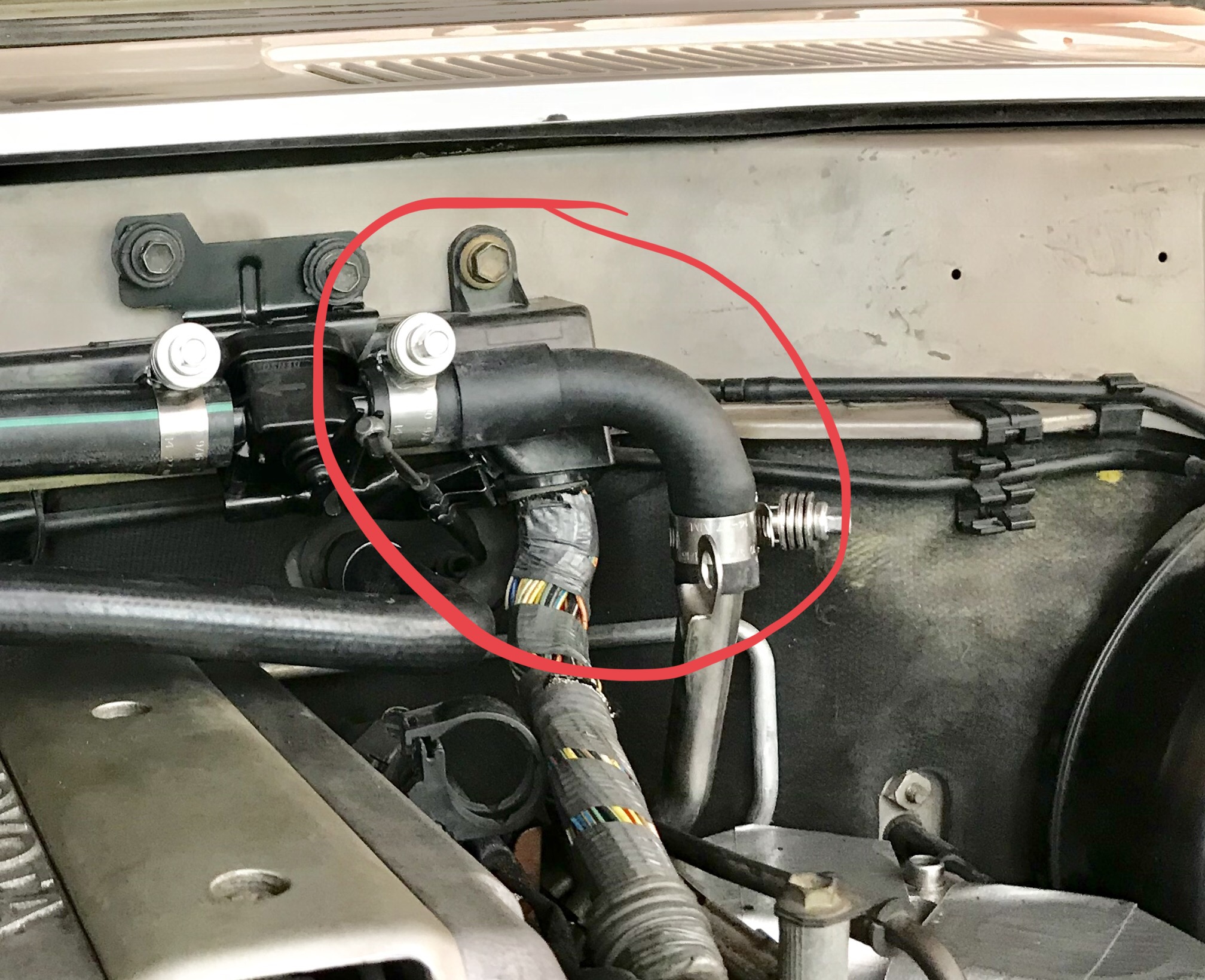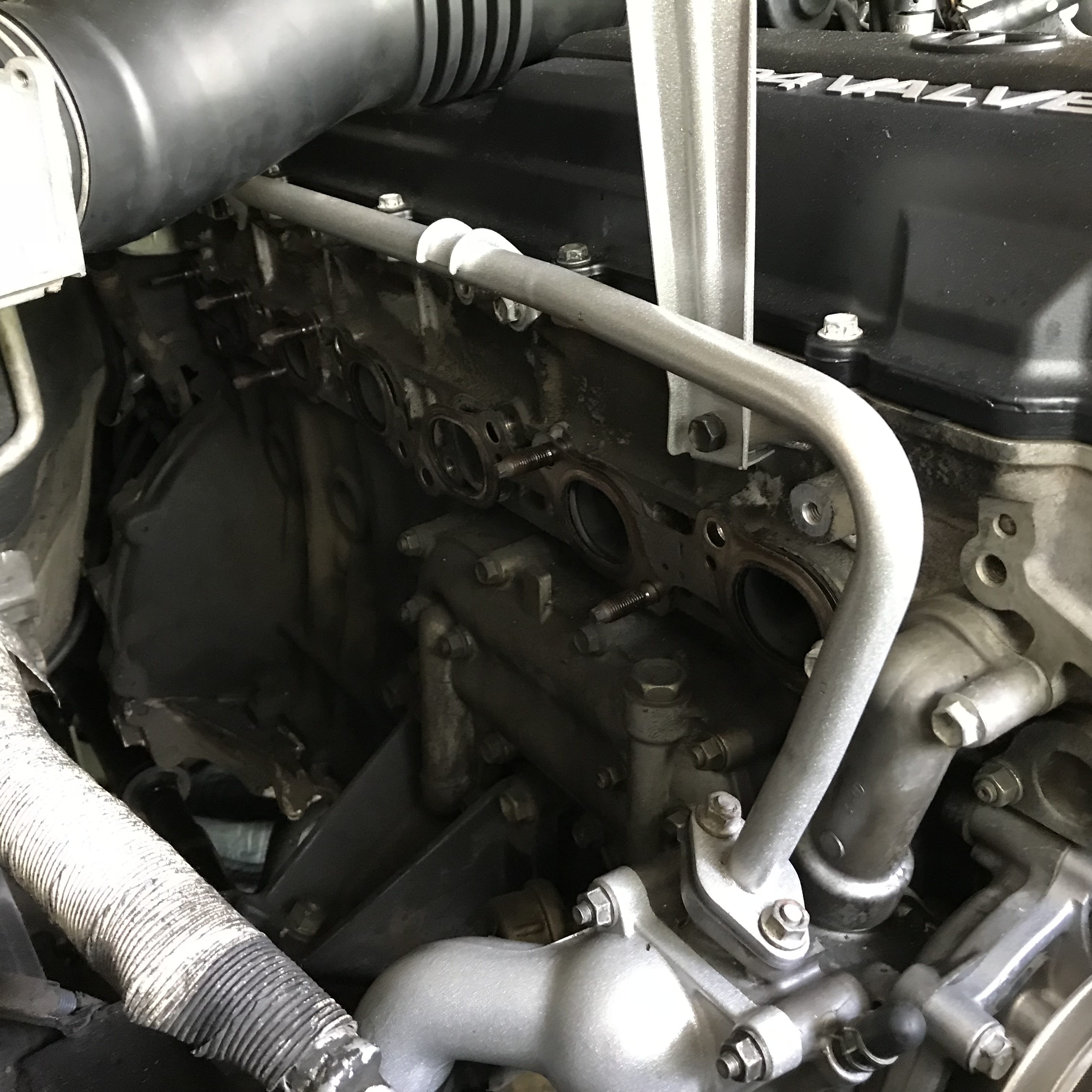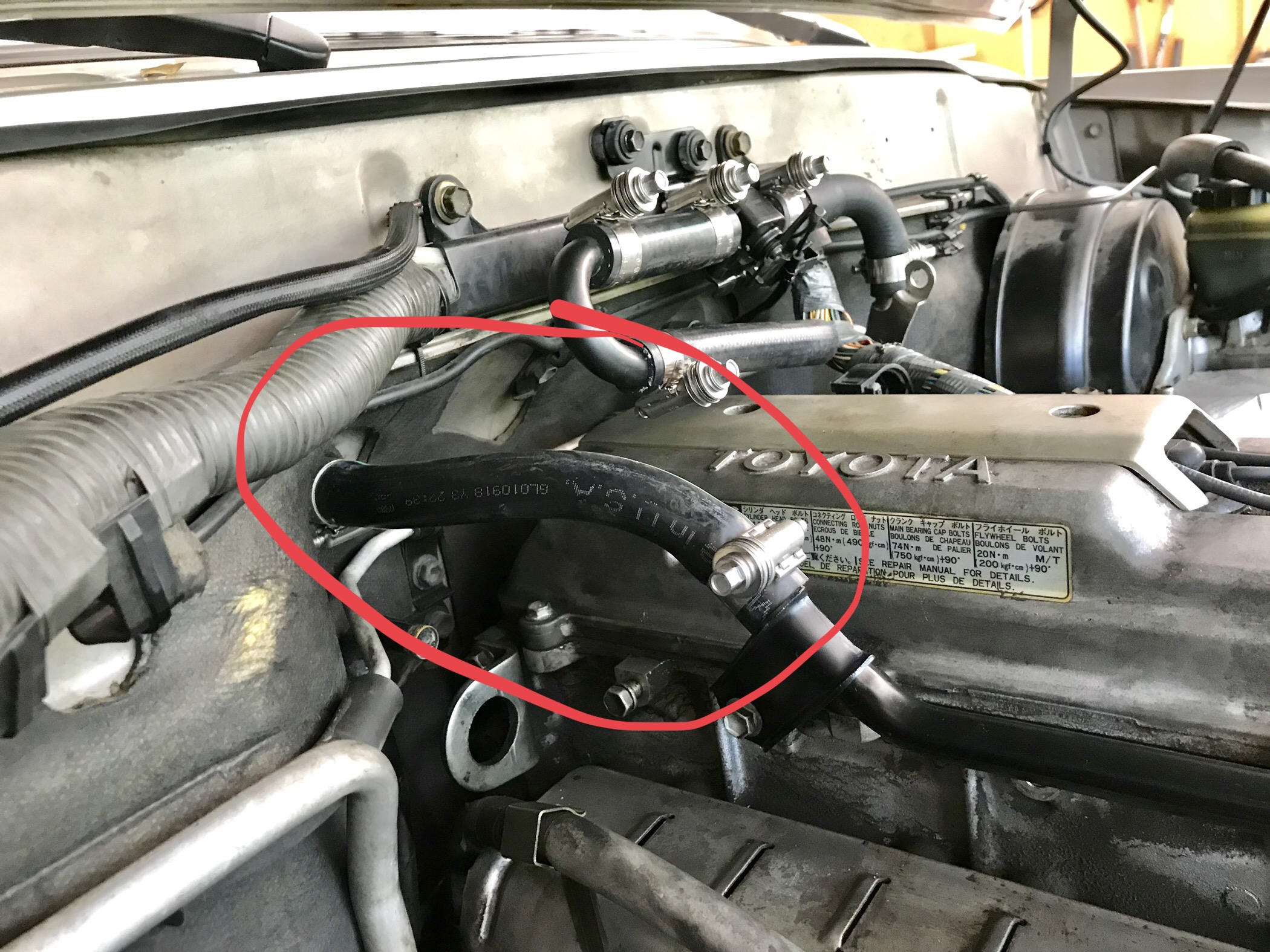Took the opportunity while the exhaust was out to gut my rear heater lines(which were bypassed with hose when I bought my pile). Did the delete last year and here’s how the lines looked.  had to cut the steel line that crosses over to the DS to get it out.
had to cut the steel line that crosses over to the DS to get it out.

Navigation
Install the app
How to install the app on iOS
Follow along with the video below to see how to install our site as a web app on your home screen.
Note: This feature may not be available in some browsers.
More options
Style variation
You are using an out of date browser. It may not display this or other websites correctly.
You should upgrade or use an alternative browser.
You should upgrade or use an alternative browser.
Rear Heater Delete/Coolant Line Cleanup
- Thread starter Will Van
- Start date
This site may earn a commission from merchant affiliate
links, including eBay, Amazon, Skimlinks, and others.
More options
Who Replied?Took the opportunity while the exhaust was out to gut my rear heater lines(which were bypassed with hose when I bought my pile). Did the delete last year and here’s how the lines looked.had to cut the steel line that crosses over to the DS to get it out.
View attachment 2291025
Nice! To make it happen can you just remove the exhaust or does the exhaust manifold need to come off also.
I’d say the manifolds definitely need to come out. At least the rear one.Nice! To make it happen can you just remove the exhaust or does the exhaust manifold need to come off also.
I just wanted to give a quick picture tutorial on how I cleaned up my heater and coolant lines under the hood.
On my '93, this method reduced the number of heater hose connections from over 50, to about 10. It also makes the whole system much more simple. This method requires deleting the rear heater (obviously), PAIR system (which Toyota did on later models anyway), and the throttle body coolant lines. On colder-climate trucks, you may want to avoid deleting TB coolant lines.
Replacement parts needed:
- OEM Heater Control Valve (Toyota PN: 87240-60140)
- Gates 5/8" Green Stripe Hose (Wits' End, Solutions for Problems You Didn't Know You Had)
- ‘95 to ‘97 model one-piece thermostat housing to firewall hard pipe (Toyota PN: 87208-60161)
- PHH hardline top "Elbow" to heater valve (Toyota PN: 87245-60480)
- Breeze Constant Torque Hose Clamps for 5/8" Hose (Wits' End, Solutions for Problems You Didn't Know You Had)
- Land Cruiser Products "U" Shape one-piece heater hose (Rear Heater Bypass Hose - Land Cruiser Products - LCP)
- Two 5/16" rubber caps and clamps
To start off with, now is a good time to replace your Pesky Heater Hose ("PHH") and heater valve, since you're going to drain the cooling system and replace lines anyway. There are plenty of great write-ups on this portion of the procedure, so I won't include too much on that topic.
Slee - PHH (Toyota 80 Series Land Cruiser)
ExpeditionLCMajorcoolingoverhaul
The 90* heater elbow (Toyota PN: 87245-60480) goes on top of the PHH hard line. You can bypass the hardline for even fewer connections, but I was afraid a rubber bypass line would rub somewhere and leak. Don't worry, I re-wrapped the engine harness after this photo was taken.

While you're in the DS front fender doing the PHH, pull the line for the "PHH Neighbor" that routes from the head to the intake manifold hardline.

Cap the "PHH Neighbor" port with one of your 5/16" rubber hose caps.

Now move to the water pump and pull the 5/16" line coming off the top of the thermostat housing.

Cap the thermostat port with the other 5/16" rubber cap.

At this point you have isolated the TB and can remove all of the abandoned TB coolant lines/connections at the front of the motor and under the intake manifold.
Next, we'll move to the Firewall Heater Hoses ("FHH"), heater valve, and thermostat hardline.
I followed this excellent writeup and video tutorial for FHH (Project FJ4door: How I did my 80 series floor heater bypass fzj80 fj80 lc80 lx450). This is the meat and potatoes of the rear heater delete.
The majority of the rear heater deletes I have seen simply use a Gates 90* heater hose from a Dodge Cummins. This is what I did initially.

This setup still utilizes the factory "U" shaped hard pipe and simply deletes the rear heater hard pipe on the DS with the 90* Dodge heater hose.
Member @LandCruiserPhil came up with a very clever one-piece solution from Toyota/Gates (Rear Heater Bypass Hose - Land Cruiser Products - LCP). This converts the "U" shaped hardline to a one-piece hose, and reduces the number of connections at the firewall.


Finally, the '93 and '94 trucks had two-piece hard pipe and multiple connections from the thermostat to the firewall because of the PAIR system.

If you delete the PAIR system, you can run a one-piece hardline (Toyota PN: 87208-60161) and regular Gates 5/8" green stripe directly from the firewall to the hard pipe. This also deletes the PS portion of the rear heater at the firewall.


That's about it! Please let me know if you have any questions.
I have a 94 1FZFE will this hard line work for my engine? It looks like it will- just wanted to confirm it with you guys:
“It’s that 1-piece hard line you mentioned earlier:
Toyota PN: 87208-60161”
I have a 94 1FZFE will this hard line work for my engine? It looks like it will- just wanted to confirm it with you guys:
“It’s that 1-piece hard line you mentioned earlier:
Toyota PN: 87208-60161”
Yes! It works perfectly on my 1994, once you have removed the PAIR system of course.
What does the pair system consist of ?Yes! It works perfectly on my 1994, once you have removed the PAIR system of course.
And why is it necessary to remove it ?
What does the pair system consist of ?
And why is it necessary to remove it ?
The PAIR system takes filtered air and injects it into the exhaust to dilute it. Toyota got rid of the system on 1995 and later 1FZFE US motors.
The PAIR stuff is in the way of the that neat one piece coolant hard line 87208-60161.
Ah I see,The PAIR system takes filtered air and injects it into the exhaust to dilute it. Toyota got rid of the system on 1995 and later 1FZFE US motors.
The PAIR stuff is in the way of the that neat one piece coolant hard line 87208-60161.
Is there an advantage to deleting the pair system ?
Is there a thread on this by chance?
First of all, the PAIR system has a bunch of vacuum lines, valves, and other parts that are just liable to break down, and it doesn't help performance at all. It just takes filtered air and re-routes it to the exhaust headers, which just dilutes your exhaust gasses. You can buy block-off plates for cheap, the whole thing for about $30. Alternatively, you can also take your O2 sensors and put them up in the holes, which makes them a LOT easier to change and keeps them up off the ground (where they're prone to rusting). There's no real reason at all to keep it, UNLESS you live in a state like the Socialist Republic of California and they do a visual inspection of all of your emissions equipment.Ah I see,
Is there an advantage to deleting the pair system ?
Is there a thread on this by chance?
Oh I also wanted to add that you can just replace that whole pipe with a piece of 5/8" Gates Green stripe, which is what I did. Total cost, with constant tension hose clamps was less than $20. If you cut the hose to the correct length, it is rigid enough that you don't need anything to support it.
How did you cap the rear heater lines? I don’t want anything crawling up in there. I was thinking of using a piece of pipe with a bolt, but wanted something neater and shorter.I just wanted to give a quick picture tutorial on how I cleaned up my heater and coolant lines under the hood.
On my '93, this method reduced the number of heater hose connections from over 50, to about 10. It also makes the whole system much more simple. This method requires deleting the rear heater (obviously), PAIR system (which Toyota did on later models anyway), and the throttle body coolant lines. On colder-climate trucks, you may want to avoid deleting TB coolant lines.
Replacement parts needed:
- OEM Heater Control Valve (Toyota PN: 87240-60140)
- Gates 5/8" Green Stripe Hose (Wits' End, Solutions for Problems You Didn't Know You Had)
- ‘95 to ‘97 model one-piece thermostat housing to firewall hard pipe (Toyota PN: 87208-60161)
- PHH hardline top "Elbow" to heater valve (Toyota PN: 87245-60480)
- Breeze Constant Torque Hose Clamps for 5/8" Hose (Wits' End, Solutions for Problems You Didn't Know You Had)
- Land Cruiser Products "U" Shape one-piece heater hose (Rear Heater Bypass Hose - Land Cruiser Products - LCP)
- Two 5/16" rubber caps and clamps
To start off with, now is a good time to replace your Pesky Heater Hose ("PHH") and heater valve, since you're going to drain the cooling system and replace lines anyway. There are plenty of great write-ups on this portion of the procedure, so I won't include too much on that topic.
Slee - PHH (Toyota 80 Series Land Cruiser)
ExpeditionLCMajorcoolingoverhaul
The 90* heater elbow (Toyota PN: 87245-60480) goes on top of the PHH hard line. You can bypass the hardline for even fewer connections, but I was afraid a rubber bypass line would rub somewhere and leak. Don't worry, I re-wrapped the engine harness after this photo was taken.

While you're in the DS front fender doing the PHH, pull the line for the "PHH Neighbor" that routes from the head to the intake manifold hardline.

Cap the "PHH Neighbor" port with one of your 5/16" rubber hose caps.

Now move to the water pump and pull the 5/16" line coming off the top of the thermostat housing.

Cap the thermostat port with the other 5/16" rubber cap.

At this point you have isolated the TB and can remove all of the abandoned TB coolant lines/connections at the front of the motor and under the intake manifold.
Next, we'll move to the Firewall Heater Hoses ("FHH"), heater valve, and thermostat hardline.
I followed this excellent writeup and video tutorial for FHH (Project FJ4door: How I did my 80 series floor heater bypass fzj80 fj80 lc80 lx450). This is the meat and potatoes of the rear heater delete.
The majority of the rear heater deletes I have seen simply use a Gates 90* heater hose from a Dodge Cummins. This is what I did initially.

This setup still utilizes the factory "U" shaped hard pipe and simply deletes the rear heater hard pipe on the DS with the 90* Dodge heater hose.
Member @LandCruiserPhil came up with a very clever one-piece solution from Toyota/Gates (Rear Heater Bypass Hose - Land Cruiser Products - LCP). This converts the "U" shaped hardline to a one-piece hose, and reduces the number of connections at the firewall.


Finally, the '93 and '94 trucks had two-piece hard pipe and multiple connections from the thermostat to the firewall because of the PAIR system.

If you delete the PAIR system, you can run a one-piece hardline (Toyota PN: 87208-60161) and regular Gates 5/8" green stripe directly from the firewall to the hard pipe. This also deletes the PS portion of the rear heater at the firewall.


That's about it! Please let me know if you have any questions.
thanks
How did you cap the rear heater lines? I don’t want anything crawling up in there. I was thinking of using a piece of pipe with a bolt, but wanted something neater and shorter.
thanks
Are you pulling your rear heater out?
No, just deleting the rear heater lines. Just want to block off the holes to the rear heater ports on the firewall so that nothing climbs in there or debris/mud enters.Are you pulling your rear heater out?
davidp14
SILVER Star
I used a shop vac with a cone and a silicone hose taped to it to suck out any remaining coolant. I didn't cap them mostly because I couldn't find any that fit
Will Van
GOLD Star
- Thread starter
- #98
Actually now that you say that, I think this is what I did. I just capped them off at the firewall with some rubber caps and left the remaining lines connected all the way to under the seat.You could just crimp them shut. They're pretty soft.
Autozone/Advanced/NAPA sell 5/8" Dorman rubber caps for $5.00/pair.
Apologies, I sold my 80 series. Otherwise I would go take a photo.
Did you ditch your heat shields too or reinstall them once you got the lines off?Took the opportunity while the exhaust was out to gut my rear heater lines(which were bypassed with hose when I bought my pile). Did the delete last year and here’s how the lines looked.had to cut the steel line that crosses over to the DS to get it out.
View attachment 2291025
Definitely still want the heat shields.Did you ditch your heat shields too or reinstall them once you got the lines off?
Similar threads
Users who are viewing this thread
Total: 1 (members: 0, guests: 1)
